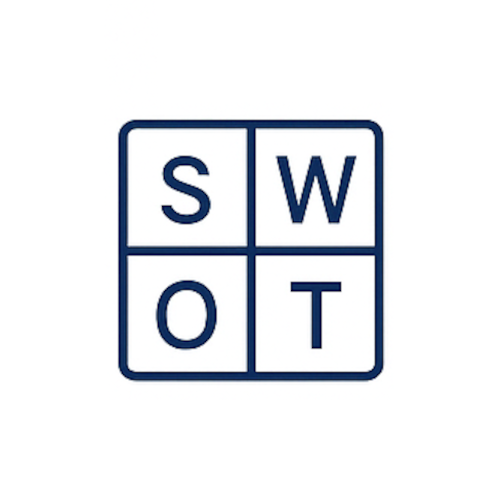State of play
Most organizations lack a clear vision that states where they want to go and how they define their desired outcomes. Perhaps they aspire to become the biggest industry players in their country or even globally. Maybe they aim to go public (IPO) or be acquired by a larger entity for an exit. Whatever their vision, many organizations don’t invest the time and effort needed to articulate it, let alone communicate it clearly to all employees and shareholders.
To exacerbate the issue, a significant number of these organizations lack a clear description of their mission. This description should answer fundamental questions like: Why do they exist? What is their industry, and what precisely do they do? What value do they create, and for which customers? Equally important is stating what they explicitly choose not to do and which market segments they deliberately avoid servicing.
Without a solid understanding of their mission, it’s no wonder these organizations struggle to define their vision. After all, the vision is the graduation point of the mission. For instance, if your expertise lies in building cars, it would be odd to aspire to be the best bread baker in the country.
To achieve your organizational goals, it is imperative not only to define your mission and vision but also to transparently communicate them throughout your entire organization and beyond, reaching all employees and shareholders. However, this is just the initial step; the subsequent stage involves formulating the strategy.
The challenge faced by most organizations is the lack of guidance in defining and articulating a mission and vision. Many so-called strategic frameworks emphasize defining goals and objectives, or, to be in trend, objectives and key results (OKRs). The problem is that these frameworks provide little assistance in performing the essential first step before attempting to define good goals and objectives. This first step is defining the organization’s mission and vision. It’s obvious that strategy is nothing more than the approach an organization takes to move from where they are towards their vision. Without a clear vision, how can there be a clear approach to get there?
At Sengi, we don’t put the carriage in front of the horse. Sengi is built around the idea that the first thing you do is define your mission and vision. We then guide you in defining a strategy, with all its facets, that you can execute to reach the said vision. Only after that we start discussing about defining the goals and objectives required to execute that strategy. Mission → Vision → Strategy → Goals → Objectives – this is the way we proceed.
So what about strategy?
The word ‘strategy’ comes from the military, the domain of leading armies into battle, and ideally, to success. ‘Strategy’ originates from the Greek word ‘strategos,’ which means general, and ‘strategia,’ which means generalship.
Although in the business world, we’re not interested in literally destroying our competitors, we are still eager to succeed in overcoming competition and reaching our vision. In a sense, organizations are still undertaking battles—they contend with competitors for the same customer segments, and just like for the military, winning battles is important, but the ultimate goal is winning the war. For business organizations, that means reaching their vision.
So, what is strategy? The simple definition is that strategy is the set of all decisions made before the battle, while tactics are the set of all decisions made during the battle. In other words, all decisions that you make based on the organization’s mission and vision, in terms of how to position your organization in the market relative to customers and competitors, constitute strategy. On the other hand, all the day-to-day decisions that you make to tackle issues, seize opportunities, avoid threats and risks, or, in general, conduct business operations, constitute tactics.
In short, strategy is the set of all decisions on how you wish to position your organization in the market relative to customers and competitors, which customer segments you target and which you don’t, who are your non-competitors, who are your partners, who are your competitors, and how do you want to differentiate from them. There’s a lot in that definition—different types of decisions—about customers, partners, competitors, differentiation. That’s why we say strategy is multi-faceted.
When defining strategy, you start with a broad overarching approach like “Overcome competition through the best and easiest-to-use product,” indicating how you wish to differentiate from your competitors. Then, following directly from this strategic statement, you identify a set of key concerns that are of strategic importance and that you need to invest in.
For the strategy above, some key concerns include a superior product feature set, product performance for seamless use, an easy-to-use product, and perhaps the best 3rd party integration offering with other complementary products. We call these the strategic pillars.

Where do goals come in?
Now that we have a good understanding of our mission, vision, strategic approach, and the key strategic pillars, we can start talking about goals. Goals indicate the current focus of the organization; what needs to be improved right now. While all the strategic pillars are important for our strategy, perhaps the most crucial areas for improvement at the moment are the feature set, performance, and ease of use. Expanding the list of integrations, although important, is not our primary focus at the moment.
Specifically, when looking at the pillar related to providing a superior product feature set, we recognize that, though there’s a lot to improve, right now our reporting offering is the one we should really focus on. So the first goal, directly subordinated to the ‘Superior product feature set’ pillar, is to ‘Expand training reports’.

When it comes to performance, although both our web and mobile applications could be faster, our primary concern lies on the mobile side. Thus, the second goal, subordinated to the ‘Product performance for seamless use’ pillar, would be to ‘Improve mobile product performance’.

Note that the strategic pillar states ‘Product performance for seamless use,’ so once we subjectively feel that the goal is sufficiently met, we’re unlikely to pursue the objective of ‘Improve mobile product performance.’ After all, we’re improving performance insofar as it supports our strategy and not for improvement’s sake.
So, if we apply the same logic to all the other strategic pillars, how does it all look when put together?

In closing
Articulating your organization’s mission, vision, and key strategic approach to take you from where you are towards your vision is not rocket science. However, we see organizations of all shapes and sizes struggle with this time and time again, to the extent that 90% of them fail to execute their strategy because 95% of their employees don’t know or understand what that strategy is. For small and medium-sized organizations, it’s even worse, as most of them don’t even have a clear strategy or know what a strategy is.
Our goal is to provide you with the tools, frameworks, and techniques you need to define your mission and vision, to select the customers you’re willing to fight over and the market segments you don’t see as your customers, to understand your strengths and weaknesses relative to your competitors, to define a winning strategic approach that takes advantage of your strengths and avoids your weaknesses so you position yourself on the market to differentiate from and overcome your competitors, and lastly, to define meaningful goals that are aligned with and actually support your strategy. This is what we at Sengi call – strategic clarity.
What’s next?
Are you interested in defining your mission, vision, and strategy? Congratulations! This already sets you ahead of most organizations you’re likely competing with. The next thing to do is set up an account on Sengi and give it a try. See how you like it. Ready, set, go!












